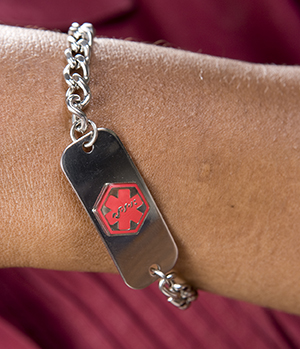Diabetes: Driving Issues
Diabetes: Driving Issues

Be prepared when driving
Tips include the following:
Keep your diabetes supplies, such as your blood glucose meter, with you in the car. Make sure they are within easy reach, not in the backseat or trunk. Also keep snacks, and fast-acting sugars, such as glucose tablets, within reach in the car.
In case of emergency, wear a bracelet or necklace that says you have diabetes. Also carry your cell phone with you when driving in case you need to call for help.
Driving safety
Many things, including medicine, may cause your blood sugar to go too low at times. This is called hypoglycemia. Driving when your blood sugar is low can be as dangerous as driving while drunk. To drive safely:
Before starting out, check your blood sugar. Don't drive if it is below your target range.
When driving, stop to check your blood sugar at least every 2 hours (or as often as directed by your healthcare provider).
If you feel symptoms of low blood sugar while driving, pull over and check your blood sugar right away:
If your blood sugar is low, eat or drink 15 grams to 20 grams of fast-acting sugar. That's 3 to 4 glucose tablets or 4 ounces (1/2 cup) of fruit juice or nondiet soda. Wait 15 minutes. Then test to see whether your blood sugar is still low. If it is, eat or drink another 15 grams to 20 grams of fast-acting sugar.
Once your blood sugar is normal, eat a more substantial snack or meal with protein (if possible). Don't resume driving until your blood sugar is at a safe level.
If your blood sugar does not go back up, call your healthcare provider or 911 to get help right away.
Have your eyes tested at least once a year to be sure your vision is still adequate for driving.
Updated:
December 16, 2017
Sources:
Diabetes and Driving. Lorber D. Diabetes Care. 2014;37(1):s97-103.
Reviewed By:
Hurd, Robert, MD,Image reviewed by StayWell art team.,Sather, Rita, RN